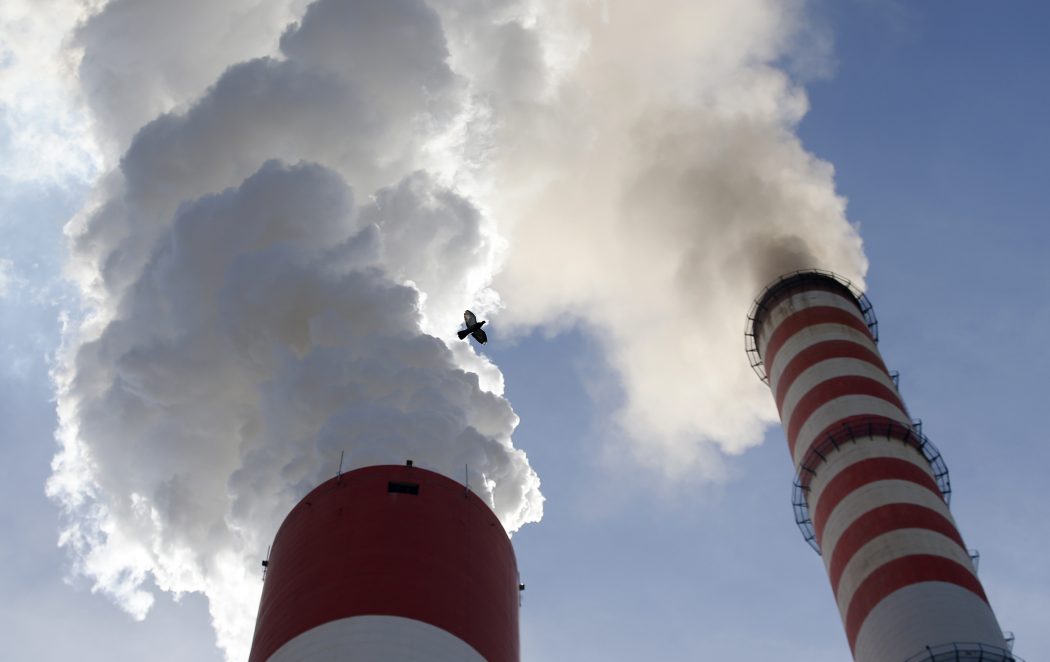COLUMN: Sorry, but you can’t do anything to fix climate change
Editor’s Note: To submit a response to this column, or submit a letter to the editor on a new topic, email your submission to opinion@usustatesman.com.
We all have a responsibility to combat climate change, right? We’ve been encouraged to drive less, limit our electrical consumption and even eat less red meat, with the impression that these measures will meaningfully reduce CO2 emission levels.
As admirable as they may be, these lifestyle changes do virtually nothing to fix climate change. Buying an electric car isn’t going to help any more than riding your bike.
But isn’t turning off the lights when we leave the house or changing our diet something we can do as individuals to reduce carbon emissions? Perhaps, but only if it were to occur in a concerted effort and on a mass scale, which is historically unprecedented and unfeasible.
There are other, seldom-scrutinized sources of carbon emissions, though.
Nearly 40 percent of global carbon emissions come from transportation and energy production. But the majority of these emissions originate from the commercial and industrial sectors. A false equivalency has been created between individual and commercial carbon footprints that prevents us from adequately addressing climate change.
A single container ship, which transports goods overseas, annually emits as much carbon as 50 million cars. There are 1.2 billion cars on the road worldwide today, the emissions for which are equivalent to 24 of these vessels.
There are more than 5000 container ships worldwide. That’s more than 200 times the amount of carbon emitted by every car in the world combined.
Just one hundred corporations in the world are responsible for more than 70 percent of greenhouse gas emissions since 1988. This is despite car sales more than doubling between 1990 and 2018.
Climate change isn’t happening because you drove to work today instead of riding your Segway.
According to an Oxfam study, the wealthiest ten percent are responsible for half of greenhouse gas emissions worldwide, while the poorest half of the world’s population emit only ten percent.
The average person in the top one percent of income earners emits 175 times more carbon than someone in the bottom ten percent.
In the U.S., the industrial and commercial sectors account for nearly two-thirds of electricity consumption, compared to 37 percent by the residential sector, according to the EPA.
Why, then, the focus on reducing individual carbon footprints by using public transit or buying Elon Musk’s solar panel roofing shingles?
It’s become a trend in recent years to recycle, shop locally, and unplug unused devices, all with the belief that these measures will aid in the battle against climate change. Although these are all praiseworthy efforts, no one is saving the world by installing energy-efficient light bulbs – or banning plastic bags, for that matter.
In reality, the emphasis on reducing individual carbon footprints distorts people’s perception of the origins of CO2 emissions and distracts from addressing the true drivers of climate change. This benefits multinational corporations because it diverts the attention away from them and places the blame on average people driving cars and watching TV.
In the effort to mitigate climate change and reduce global carbon emissions, the onus clearly shouldn’t be placed on the individual.
This isn’t to suggest that we should abandon global shipping lines or put an end to industrial manufacturing. But a sincere effort to reduce global carbon emissions means revolutionizing the energy industry, beginning with the industrial and commercial sectors.
It’s time to reevaluate our views about the causes of climate change and put more pressure on big business to take responsibility for its outsized role as a carbon emitter.

